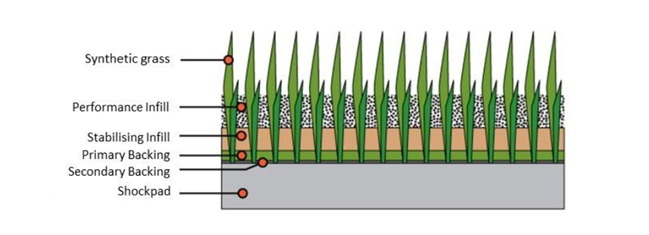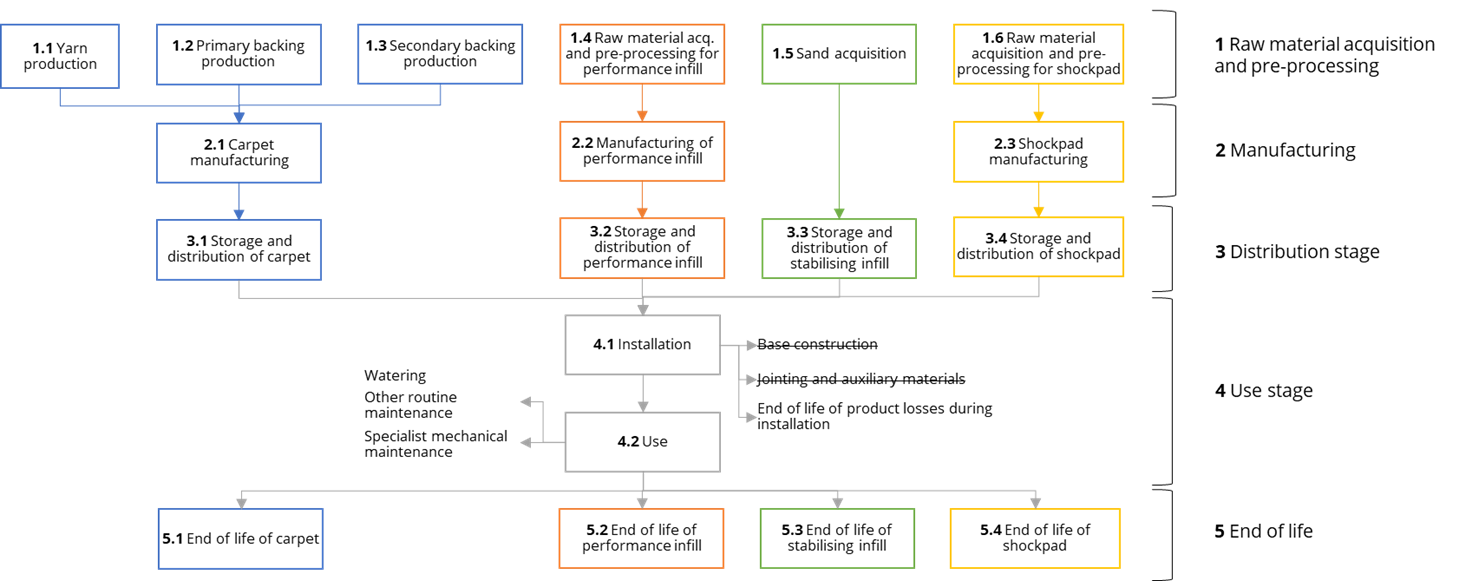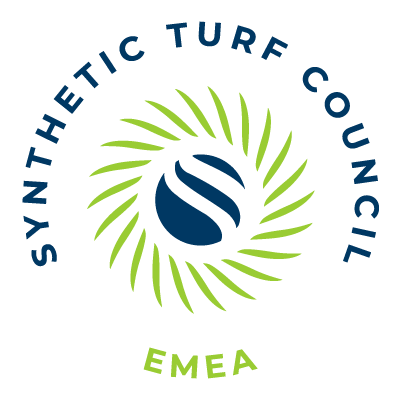Laying the groundwork for PEFCR in the synthetic turf industry
Globally, and especially in Europe, it is becoming increasingly important to understand the environmental implications of products over their entire life cycle. To do so, it is essential to have harmonized calculation rules so companies can calculate and compare their impacts. Harmonized calculation rules help prevent errors and greenwashing and make it easier and more powerful to make improvements in globalized supply chains. In this case study, we’re looking at the development of these harmonized rules for the synthetic turf industry.
About
The synthetic turf industry has set its sights on introducing new environmental standards to help companies substantiate environmental claims about their products, reduce assessment costs and improve product comparisons. For that reason, the ESTC, the trade association for the synthetic turf industry in the EMEA region, decided to embark on a journey to develop Product Environmental Footprint Category Rules (PEFCR) for synthetic turf surfacing.
Challenge
Synthetic turf systems (STS) are plastic fiber surfaces that are used to replace natural grass fields for playing sports (football, hockey, rugby, tennis, etc.) or landscaping applications (playgrounds, and applications in residential, recreational or public sectors).
The advantage of artificial turf is that is more hard-wearing than natural grass. It is durable in different climates, and easy to maintain with very little water consumption. For sports, it may enhance the experience and promote a healthier lifestyle. On the other hand, artificial grass is plastic-based, with the challenges and issues related to plastic and fossil-based materials. If synthetic turf is used to replace existing natural grass fields, its use can also contribute to decreasing natural grass areas.
Synthetic turf systems are complex. For sports applications, they usually consist of a carpet (synthetic grass/ yarn, primary backing, secondary backing), performance infill, stabilizing infill, and a shockpad (Figure 1). Each component is potentially manufactured somewhere else and installed by a systems installer.

STS for landscaping applications are simpler than for sports, consisting of a carpet (synthetic grass yarn, primary backing, secondary backing), and potentially stabilizing infill and/or a shockpad. Landscaping STS doesn’t include performance infill.
The typical material composition of a synthetic turf system includes a polyethylene-based yarn (mixed with polypropylene for landscaping STS), a polypropylene primary backing, a styrene-butadiene-styrene secondary backing, a performance infill consisting of end-of-life tires, sand as stabilizing infill and polyethylene foam as a shockpad. All of these materials need to be accounted for in the harmonized rules, as does the potential complex transport and installation, across the five life cycle stages (see Figure 2).

Solution
Over the course of the last 4 years, PRé has teamed up with the technical secretariat (TS) representing the turf industry to develop the Synthetic Turf PEFCR as part of the Environmental Footprint transition phase coordinated by the European Commission. The TS consists of five industry organizations, one recycling organization, one non-governmental organization, and one consultancy company, and is led by the ESTC.
Together, we embarked on a journey to develop a robust and comprehensive methodology for the environmental footprinting of synthetic turf products for sports and landscaping applications over their lifetime.
Defining the backbone of the PEFCR
Taking football as the benchmark of all sports STS applications. Football is the largest end-use application of synthetic turf sports surfacing, accounting for 47% of the demand of the TS and more than 80% of installations. For that reason it was selected to be the benchmark for sports turf surfacing.
Defining virtual products as representative products (RPs). Due to commercial reasons, the TS members did not wish to use real products as RPs and virtual products were explored instead. For sports, we defined the RP as the arithmetic average of the most commonly sold football pitch configurations manufactured by four TS members. For landscaping, we defined it as the arithmetic average of the four most commonly sold landscape synthetic turf systems of one TS member.
Excluding groundworks from the PEFCR. Groundworks are often necessary before laying synthetic turf. For instance, construction of the base in a field. However, these groundworks are site-specific and variable across regions. For that reason, we excluded them from the PEFCR. We also excluded a preparatory layer needed for installing the STS, because it is product-independent.
Defining units and usage. We defined the functional unit (FU) as ‘1 m2 of synthetic turf system installed and used for 8 years, assuming reasonable usage and adequate maintenance’ (8 m2a). For sports, the turf surface needs to retain an acceptable performance, as defined in the EN 15330-1 standard, or needs to not show significant wear and tear.
Ultimately, the turf industry advises consumers to replace the surface after 8 years. This is often the lifespan under warranty as well. Reasonable usage was defined as 40 hours of weekly usage, 25 players per hour, over an area of 7,000 m2. Adequate maintenance includes routine maintenance (cleaning of the surfaces, levelling and redistribution of the infill, and brushing of the fibres) and specialist mechanical maintenance (top dressing of performance infill to compensate for loss, and compaction and chemical treatments).
Individual turf system components modelling
To satisfy the demands of the different supply chain actors, the environmental impacts of the individual components of the STS can also be assessed from cradle to grave, following the rules defined in the PEFCR. That includes carpet, stabilizing infill, performance infill and shockpad. Figure 2 shows, in different colors, the relevant life cycle stages per component.
Biodiversity impact and plastics pollution
Some impacts that affect biodiversity are covered in the footprinting impact categories of climate change, acidification, freshwater, terrestrial and marine eutrophication, freshwater ecotoxicity, land use and water use. On the other hand, plastic pollution is of high concern for synthetic turf systems: performance infill can migrate to the environment during the use phase, as people play sports on the field. In addition, fiber debris can also end up in the environment as microplastics.
To address plastic pollution, we developed an approach for estimating the amount of fiber and infill loss to the environment. For the fiber loss in sports applications, factors such as high usage areas and non-high usage area in the field are important, in addition to the wear rate of fibers and the lifetime. For landscaping applications, factors like the wear rate of residential or recreational applications are used to calculate the fiber losses.
To calculate performance infill migration to the environment (for sports only), we applied factors like compaction and containment measures in the field.
Finally, we defined instructions for calculating the freshwater ecotoxicity impact of microplastics leakage. However, due to the high uncertainty and lack of an integrated method, reporting of microplastics freshwater ecotoxicity is done on a voluntary basis.
Developing a dedicated PEFCR has been a game changer for the Synthetic Turf industry. Going through the transition phase of the PEFCR was certainly very challenging, but PRé Sustainability has taken the stress of our shoulders and have guided ESTC through this process very professionally.
Stefan Diderich
Director General ESTC, ESTC – EMEA Synthetic Turf Council
Developing the first PEFCR-compliant tool is a breakthrough in the application of the Environmental Footprint method
To make it easier for synthetic turf manufacturers to apply the PEFCRs and lower the barrier to calculating results, PRé developed a calculation tool aligned with the PEFCR (currently under 3rd party review). Member companies using this tool will not need to read the extensive and technical PEFCR, but can simply follow the instructions embedded in the tool. A user can choose to calculate entire sports or landscaping systems, or simply individual components. It is also possible to plug supplier-specific impact assessment results into the assessment. When the tooling solution is published, it could pave the way to make PEFCR-aligned calculations more accessible and less resource-intense.
Benefits
This industry effort is paving the way for more informed decision-making for customers who buy synthetic turf systems, such as municipalities. With harmonized calculation rules and the additional calculation tool to lower the barrier, we helped create a level playing field, where producers can compare their performance to average benchmarks. Because you can only improve your environmental impact once you know it.
